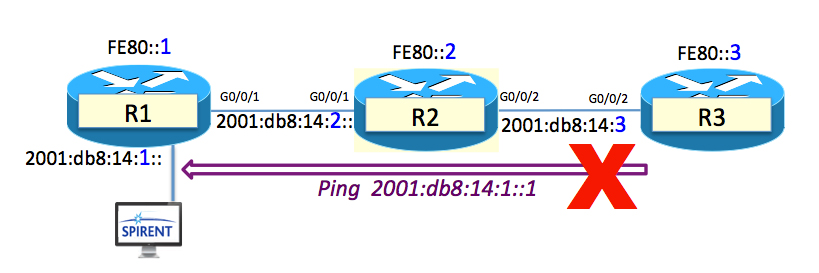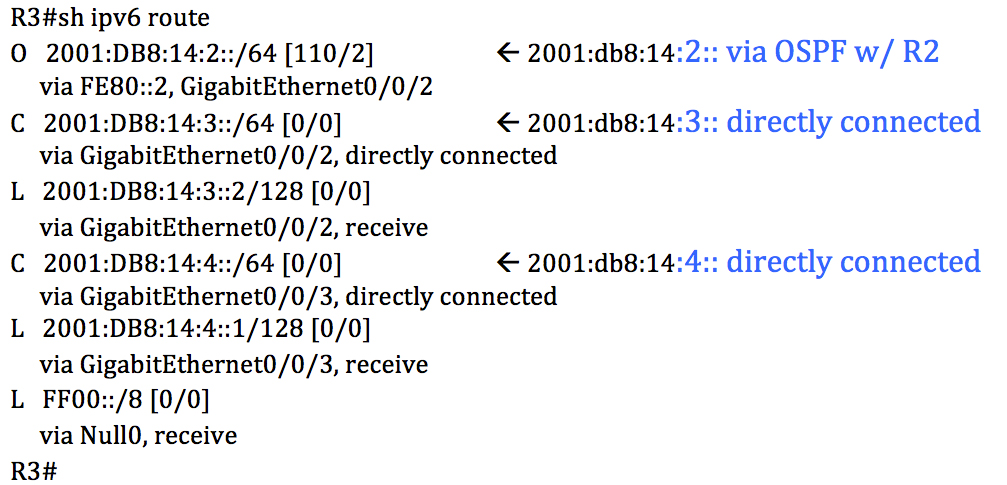0
Put your detective hat on your head and your Network Detective badge on your lapel. It is time for the Case of the Failed IPv6 Ping.
Part #1 – We hit the crime scene together and we work methodically together to
- Gather the Facts
- Collect the Clues
- Follow the Evidence
- Interview the Witnesses
- Question the Suspects
Part #2 – I give you what the problem ended up being.
Ready?  Let’s PLAY!
Let’s PLAY!
It all started when I was going to do a post on IPv6 Multicasting. I grabbed 3 ASR1K and got them all prepped: cards, code, cables, configurations. Name the routers R1, R2, and R3. Add a couple Spirent TestCenter ports for traffic and sniffing , configure them, and we are good to go.

Time for “pre-flight check”, as it were.
- PIM neighbors up and running between the routers – CHECK
- Make sure that the R3 can ping 2001:db8:14:1::1 – Um……
Oh… crap… that didn’t work.
Let’s go to the active crime scene!
Make sure that the R3 can ping 2001:db8:14:1::



Well that didn’t work did it? Let’s check the routing table on R3.

From R3’s IPv6 routing table we see
- R3 Continue reading
 So much for going public.
So much for going public.
 Brussels - which hosts several strategic European institutions such as the
Brussels - which hosts several strategic European institutions such as the 
 Let’s PLAY!
Let’s PLAY!





